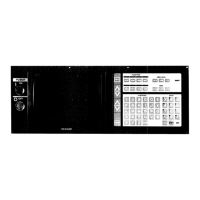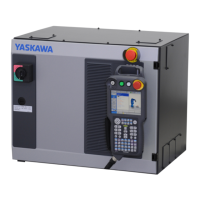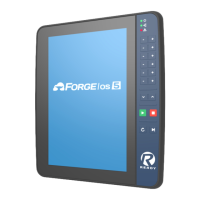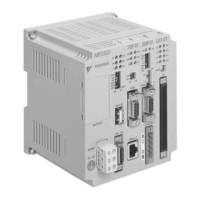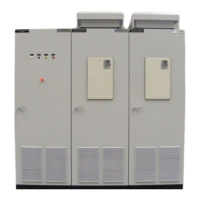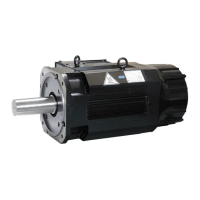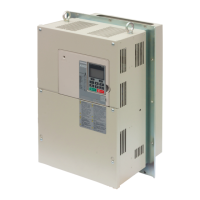SENDING
~DCl
DC 3
/DC1 ~~
SENDING sD
DATA
RECEIVING RD
~’ ,;’~
‘@-&&.._
DATA
Fig. 20.30 Time Chart External Input and External Verify Input
(7) Precautions
(a) For (6) operations, program number 00000 cannot be used.
(b) As a rule, part programs without a program number cannot be
stored. However, the following cases are exceptions.
i. When setting #6207 = O.
This normally be an input error. If O 0000 is displayed on the
CRT screen, the program is stored in 00000.
ii. When setting #6207 * O.
Stores part program normally with the numerical value set in
#6207 as the program number.
(8) Alarm Status
(a) If the part program memory capacity is exceeded when storing,
“MEMORY OVER’ is displayed on the CRT.
(b) If the mismatch is found when program verifying, the input
error (IER) output is closed. The alarm (ALM) output remains
open.
(c) When storing part program, command format checks are not
executed. Format checks are executed during automatic
operation and alarm status will be caused by error command.
(d) To reset the alarm status and screen, close the external reset
(ERS) input or depress the RESET key.
(e) EDTS (Edit Condition) can be output not only during input,
verify and output of part programs, but also during input, verify
and output of offset parameter data.
20.2.48 TOOL LIFE CONTROL SIGNALS (TLCTN,
TLSKP, TLRST, TL4-TL64, TLCHA, TLCHB)
Classify the tools into several groups and specify the tool life by
use hours, number of works and use distance for each tool. Specify
the tools in each group and when the specified life is reached, select
and use the next tool in that same group.
YASNAC J50M
—-1
I -(
+24V
# 13124,TLCTN
—
TOOL COUNT
NEGLECT
# 13291 !TLZ
I :d
—
# 13292
TL 4
—
“:E

